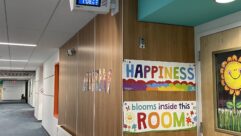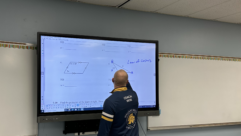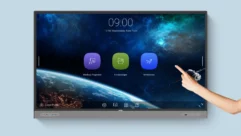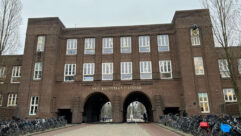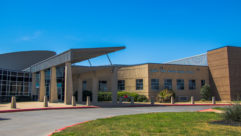
Texas School District Focuses on Teacher Skills
Sep 17, 2008 12:00 PM,
By Linda Seid Frembes

The educators at Lovejoy Independent School District (LISD) in Lovejoy, Texas, not only love to teach, but they love to learn. Located 25 miles north of Dallas, LISD recently added 235 Hitachi StarBoard FX-Duo interactive whiteboards for the 2008-2009 school year for its five schools—three elementary, one middle school, and one high school—as part of its technology-upgrade plans. “The typical classroom at Lovejoy is interactive and engaging. Our technology is learning-centered and age-appropriate,” says Dennis Womack, assistant superintendent for operations at LISD.
In his role at LISD, Womack oversees several departments such as technology, construction, maintenance and operations, and transportation. The school district has more than 2,000 students. “As part of our E-Rate funding, we must maintain a technology master plan. In Texas, we are required to have a technology master plan that outlines our detailed goals for the next three years. Part of our goal was to install an interactive whiteboard in every classroom,” he says. “Students of today want their information in small bites, similar to text messaging. We want to encapsulate that method of learning in our technology plan so that we have the tools to energize and engage the students.”
At LISD, Womack says, that there are no less than four student computers, a ceiling-mounted data projector, an interactive whiteboard, as well as a mobile cart with a presentation computer and a document camera in every K-12 classroom. The versatile carts are used as lecterns and mobile presentation units and are very compact. In some instances, the Hitachi StarBoards replaced older whiteboards. “The high school only had one whiteboard in it. We built a new middle school and new elementary school, so it was the right time to incorporate the new whiteboards as part of the construction,” Womack says.
The LISD classroom design features a “teaching wall” where the Hitachi StarBoard is flanked by a dry-erase marker board and a tack board. “The teacher uses the wall for what he or she needs to present for the day. An input plate on the wall means that the cart can easily be plugged in at that location,” Womack says. “The interactive board is used as a projection screen, video display, and computer monitor. There is also a 12ft. marker board on another wall, but the teaching wall is for prime time.”
The 77in. StarBoard is Hitachi’s newest multi-touch interactive whiteboard that recognizes multitouch hand gestures. “We also liked the fact that you’re not restricted to a proprietary writing instrument—you can use your finger, the back of your hand, or whatever you want to write on the board,” says Womack, who carefully considered other whiteboard options on the market. “The board is built in such a way to allow for multiple users at one time, which encourages student and teacher collaboration. The Hitachi whiteboard is a bit different because it can also be a dry-erase marker board as well as a magnetic board.”
According to Womack, the electronics-free surface also makes the StarBoard far less fragile than other products, which is a big plus especially in younger grades. Having the electronics built around the board also means that it is operable even if there is damage to the writing surface.
1
Texas School District Focuses on Teacher Skills
Sep 17, 2008 12:00 PM,
By Linda Seid Frembes
Learning@Lovejoy
This past summer marked the second annual “Learning@Lovejoy” professional-development conference at LISD. The school district produced the three-week long conference in conjunction with Phoenix-based Troxell Communications and various other sponsors. Operating under the motto “they are all our kids,” the conference is open to educators from Texas and across the United States. “We do invite any and all teachers to join us; the seminars are focused on good teaching practices,” Womack says. “The goal is to hone a teacher’s skills; it is not a sit-and-get.”
Most sessions at the conference cost $75 per day—which includes materials, lunch, and break snacks. According to the website, the conference is open to the education community because “professional educators need to collaborate and support each other for the benefit of every child.”
In conjunction with the new StarBoards, Hitachi education consultants provided five days of instruction at the conference, which was an increase from three days due to overwhelming response. “I appreciated the training because it was more about how to use the whiteboard with today’s generation for the best impact,” Womack says. “Although they were clearly using Hitachi products and feature sets, the best part about the training is that it could be about any whiteboard; it was more about how to modify a subject matter and integrate the use of the board. Any teacher could walk away knowing how to integrate it into their classes.”
2


